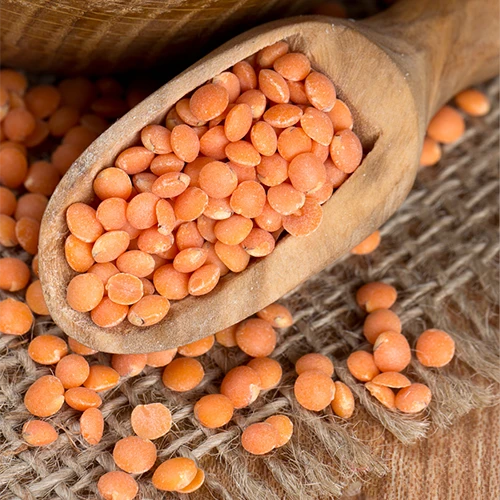ARP EnterpriseLentils Seed / Split Lentils Seed
ARP Enterprises is a trusted name among both national and international clients.
Lentils are lens-shaped seeds from the annual legume plant, Lens culinaris. They are typically small, with sizes ranging from 2-9 mm, and come in various colors like grey, green, brownish, pale red, or black, depending on the cultivar. These seeds are encased in small, laterally compressed pods, usually containing two or three seeds.
Key Characteristics:
- Shape: Lens-shaped, hence the name "lentil" (Latin for lens).
- Size: 2-9 mm in diameter, with variations depending on the variety.
- Color: Seed coat can be green, tan, brown, red, gray, black, or mottled. Cotyledons (the seed leaves) can be yellow, red, or green.
- Pods: Small, oblong, compressed pods, usually containing one to two seeds.
- Nutritional Value: Lentils are a good source of protein, fiber, and several vitamins and minerals, including vitamin B9, iron, and manganese.
- Cultivation: Grown as a cool-season crop, lentils are relatively easy to cultivate, requiring well-drained soils and tolerant of a range of conditions.
- Varieties: Numerous lentil varieties exist, differing in seed size, color, and other characteristics.
- Uses: Lentils are a staple food in many parts of the world, used in soups, salads, stews, and other dishes.
- By-products: Lentil flour is used in pastry and bread, and young pods and leaves can be eaten as vegetables ;
Additional Information:
- Lentils are an important part of crop rotations due to their ability to fix nitrogen in the soil.
- They can be stored for long periods without losing nutritional value.
- Lentils are a good source of prebiotic carbohydrates, including oligosaccharides and resistant starch.

Specifications
| Product Name: | Lentils Seed / Split Lentils Seed |
|---|---|
| Quality: | Fresh And Best Quality |
| Packing Details: | As Per Clients Requirement (Customize) |
| Origin: | India |
